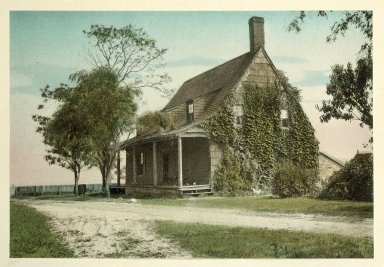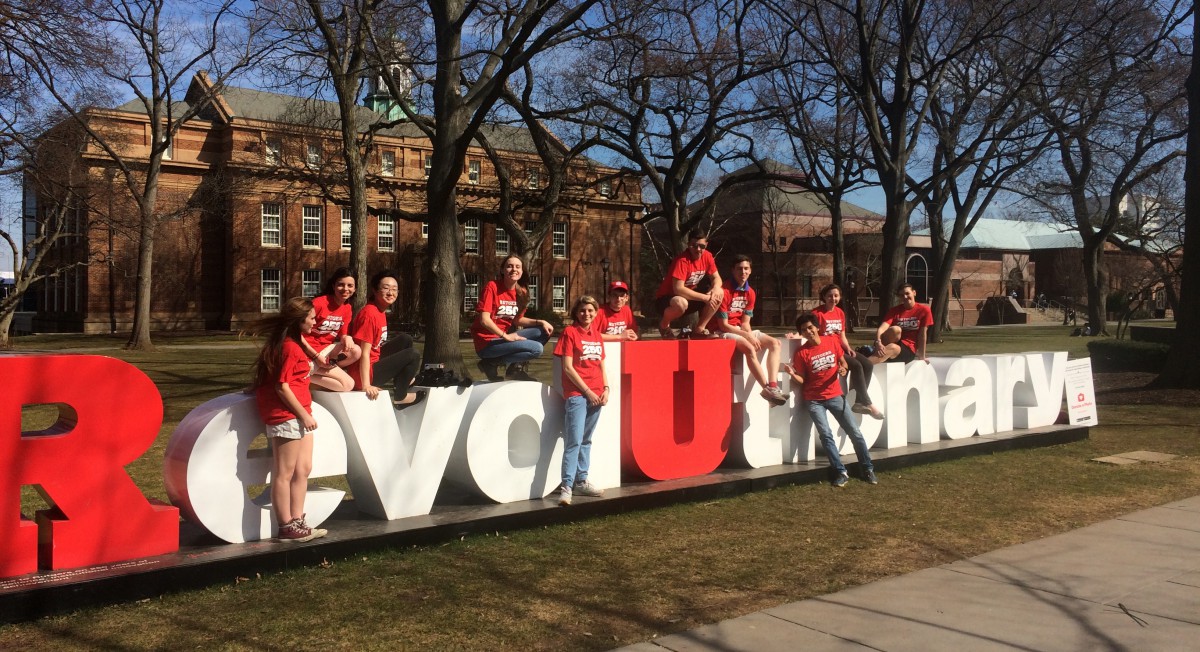James Williams, Jonathan DiPippa, Anika Kumar (Section 04)
“The Schenck House, Avenue U between East Sixty-third and sixty-fourth Streets, is considered one of the oldest houses in New York City, the original section having been built in 1656. A white house with green shutters and red brick chimneys, it stands in a little hollow back of Public School 236, surrounded by old pine trees. Its Dutch origins are evident in the small twelve-paned windows and early round-end shingles. The slender-pillared front porch formed by an overhanging roof is an eighteenth-century addition.”
–From the (1939) WPA Guide to New York City


This landmark provides a real-life recreation of traditional Dutch architecture of the Colonial period. Those interested in Dutch history can see a rebuilt version of the house inside the Brooklyn Museum.
Schenck House does not have an specific connection to Rutgers history. However, some of the architecture of the house resembles the Kirkpatrick Church located on College Avenue. The high, rounded ceilings found in the are similar to the high roof of the house, which give both a unique, Dutch aspect. The window panes are also common of Dutch architecture, and was also found as a part of the church.
We picked this object because it is one of the oldest Dutch landmarks in the United States. We found it to be interesting due to its portrayal of rural Dutch life (they lived in small farmhouses on large tracts of land). The house is also representative of the Brooklyn area of Flatlands, which is still heavily populated with people of Dutch descent. The family living in the house was one of the first of Dutch descent to settle there.
The history associated with the house is interesting as well. Jan Martense Schenck arrived in New Netherlands in 1650 and bought the tract of land that the house stands on today from another man of Dutch descent, which simply shows how long the Dutch has had a presence in North America. The house was in place around 1676. The house was a part of the Schenck family for three generations. For the 275 years where it was originally located, it underwent many changes as tastes changed. When it was moved to the Brooklyn Museum in 1929, it was recreated to the Dutch colonial style it was originally. None of the original Dutch colonial furniture is known to have survived. The land in which the house once sat is now the site of elementary school P.S. 236.
Address of original location: 6302 Avenue U, Brooklyn, NY 11234
Description of Artifact:
The house as it was originally built in 1676 was simple yet complex for its time. It was a two-room structure, and in the middle featured a chimney. The interior was composed of H-bents, which are simply cross-sectional templates that were the strongest of its time. But this also made it stand out from nearby English architecture, which were more box-like than bent. A kitchen was added around the 1790s while the chimney was removed, and in the early 1800s, a porch was also added. The last reconstruction changes before the house was relocated to the Brooklyn Museum took place around 1900.

Works Cited:
https://www.brooklynmuseum.org/features/schenck
https://en.wikipedia.org/wiki/Jans_Martense_Schenck_house
http://www.kirkpatrickchapel.rutgers.edu/about/history
